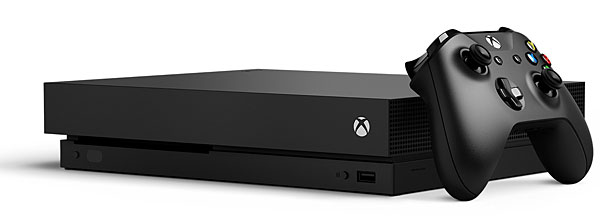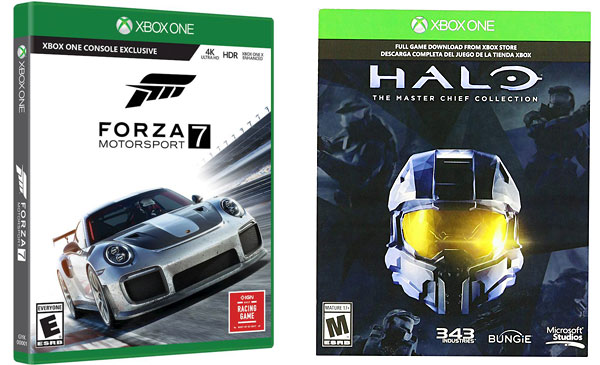Comparison: True 4K/HDR Gaming vs. Regular Gaming

HDR has actually been a factor in gaming for over a decade now, but has mostly consisted of HDR emulation, which involves taking a standard dynamic range game and exaggerating its visual aspects to create an HDR-like image. (I remember reading about HDR emulation way back when one of the Halo games launched for the Xbox 360 console.) But now that true 4K/HDR support has arrived for a variety of consoles and games, I thought I'd grab a controller and report on the experience.

While high-resolution graphics have always been a staple of PC gaming, we only recently witnessed the leap to 4K/HDR on game consoles. The first HDR-compatible console was the Xbox One S, though that model did not support 4K resolution and HDR was only available on a handful of titles. PlayStation then followed with the release of the 4K- and HDR-compatible PS4 Pro, and later updated its standard PS4 console with HDR support. The latest offering from Microsoft, the Xbox One X, is touted as the most powerful console on the market and features 4K, HDR, and Dolby Atmos support plus a feature dubbed "Xbox One Enhanced" which can mean several things, including higher frame rates and improved in-game graphics rendering.
While each of these consoles is capable of handling various video formats and resolutions, not every game supports the new 4K, HDR, or enhanced audio formats. (You can find lists of games that support different features on both the Xbox and PlayStation official websites.) The Xbox One X also supports Dolby Vision HDR, but this so far seems limited to video streaming and disc playback and not actual gaming.

More than 130 games are available in HDR for Xbox, while the PlayStation consoles support just over 100 HDR games. In both cases, some of these games feature 4K resolution, HDR, and Dolby Atmos support plus a feature dubbed "Xbox One Enhanced" which can mean several things, including higher frame rates and improved in-game graphics rendering.
Over 130 games are available in HDR for Xbox, while the PlayStation consoles support just over 100 HDR games. In both cases, some of these games feature 4K resolution and others are in standard high-definition. There are also 60-plus games available for PC playback that offer 4K/HDR support — as long as your computer's graphics card is up to the task. Same as with movie playback, you'll need to be sure you are using a compatible display for optimal HDR results.
Ready Player One
For this article, I used the Xbox One X to evaluate the state of 4K/HDR gaming. Microsoft's latest console seemed to have the best mix of games, and I was also intrigued by its support for titles with Dolby Atmos sound. I previously owned an Xbox One S, but it had been a year or so since I'd sat down and played with it. The Xbox user interface has changed quite a bit since the last time I held a controller in my hand. The new One X is also a more streamlined console than the One S, with no massive external power brick accompanying it.
Microsoft is pitching the Xbox One X as a full-featured entertainment device. On top of gaming via discs and downloads, it supports a bevy of streaming apps, including regulars like Netflix and Hulu. The Xbox One X also features an HDMI input for coupling with a cable box to provide DVR-like functionality.

I'm not going to dive into the One X's tech specs here. Performance with consoles has come a lot closer to that of PC-based gaming rigs, and they now offer unprecedented levels of graphics quality. Also, if the game is good enough, you will become immersed in the gameplay and start to lose sight of the graphics. What I want to focus more on is the experience of 4K/HDR gaming compared with regular gaming. As I mentioned above, the idea of HDR in gaming is not new, and some games did it pretty convincingly. But there's a vast performance difference between an "emulated" HDR game and one with actual HDR played on an HDR display. The distinction is similar to comparing HDR screened on a flat-panel TV capable of 1,000-plus nits of light output with a projection system that can barely achieve 100 nits. Both may look fantastic, but you'll see clear differences between the two displays when comparing them directly.
I evaluated games using two different systems. The first was my main theater, which features a native 4K projector (Sony VPL-VW885ES at the time of this writing), an 11-foot-wide screen, and a Dolby Atmos-capable audio system. The second was a living room setup consisting of an LG 65C7P OLED TV paired with a 5.1-channel Sonos audio system.
HDR Rising: Tomb Raider
The first game I checked out was Rise of the Tomb Raider, an adventure title combining classic gameplay elements with insane "open-world" graphics so that it truly feels as if you're playing inside a movie. Initially I played with HDR and 4K switched off. Even without those enhancements, the image quality was good, with dynamic lighting and a very convincing cinematic feel. Switching over to true 4K resolution didn't make a huge difference in the texture of the graphics. Things tightened up for sure, especially the edges of objects, but this sometimes also gave the graphics a bit more of an aliasing look. The addition of HDR created a profound difference, though. Rise of the Tomb Raider takes you through quite a few environments, from dark caves to bright snow-capped mountains, and the impact of the specular highlights and increased color saturation was greater than with a lot of movies I've seen that were remastered in 4K/HDR.





























































